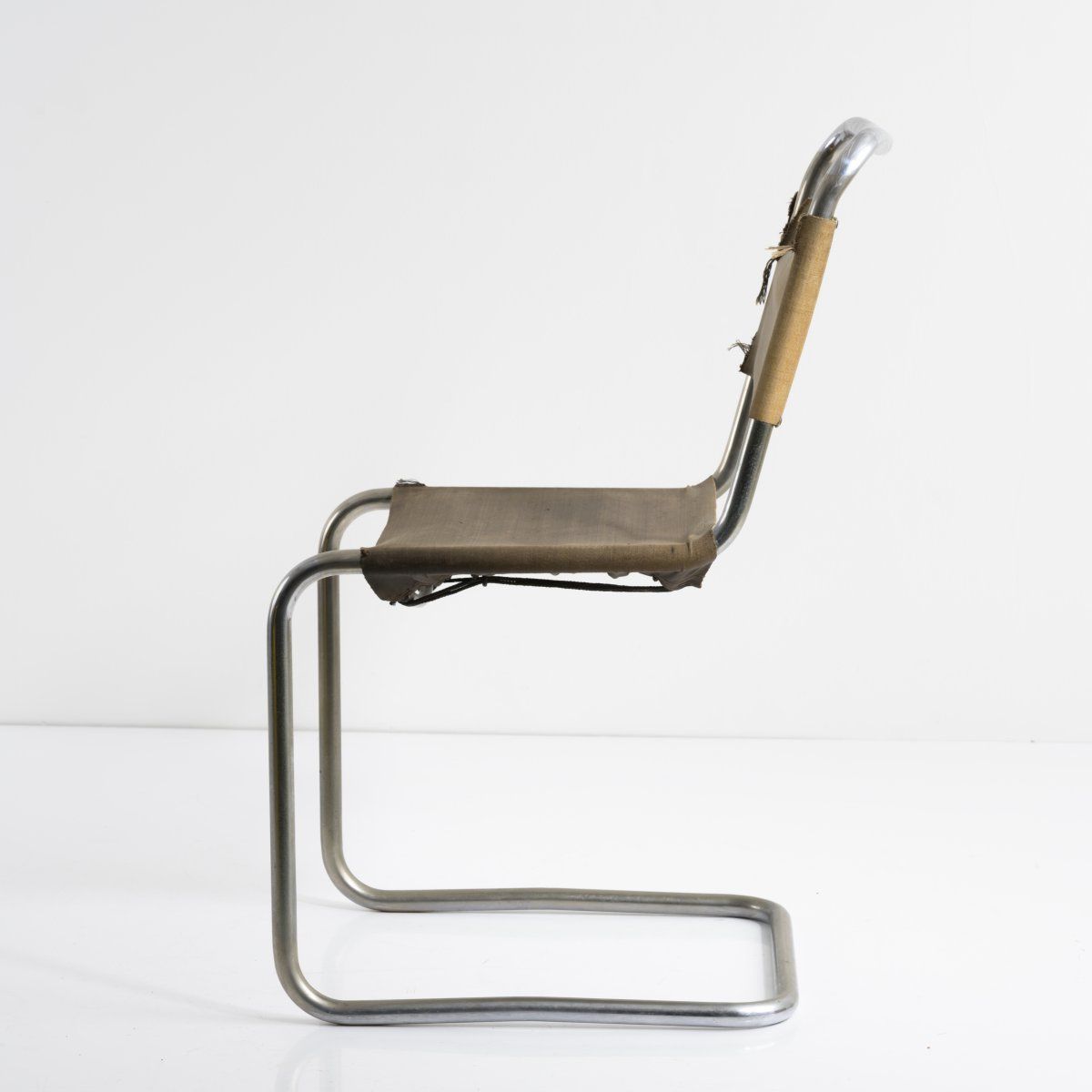Description
Marcel Breuer , 'B 33' chair (variation), 1927/1928, H. 85 x 44.5 x 59.5 cm; Tube: D. 2.4 cm. Made by Bigler, Spichiger und Cie. AG (BIGLA), Bern, early 1930s (attr.). Tubular steel, plugged in, nickel-plated, two brackets, iron thread, brown., Cf. Droste / Ludewig, Marcel Breuer Design, Cologne 1992, p. 91; cf. Mačel, 2100 metal tubular chairs, Amsterdam 2006, p. 31.
22
Marcel Breuer , 'B 33' chair (variation), 1927/1928, H. 85 x 44.5 x 59.5 cm; Tube: D. 2.4 cm. Made by Bigler, Spichiger und Cie. AG (BIGLA), Bern, early 1930s (attr.). Tubular steel, plugged in, nickel-plated, two brackets, iron thread, brown., Cf. Droste / Ludewig, Marcel Breuer Design, Cologne 1992, p. 91; cf. Mačel, 2100 metal tubular chairs, Amsterdam 2006, p. 31.
You may also like
